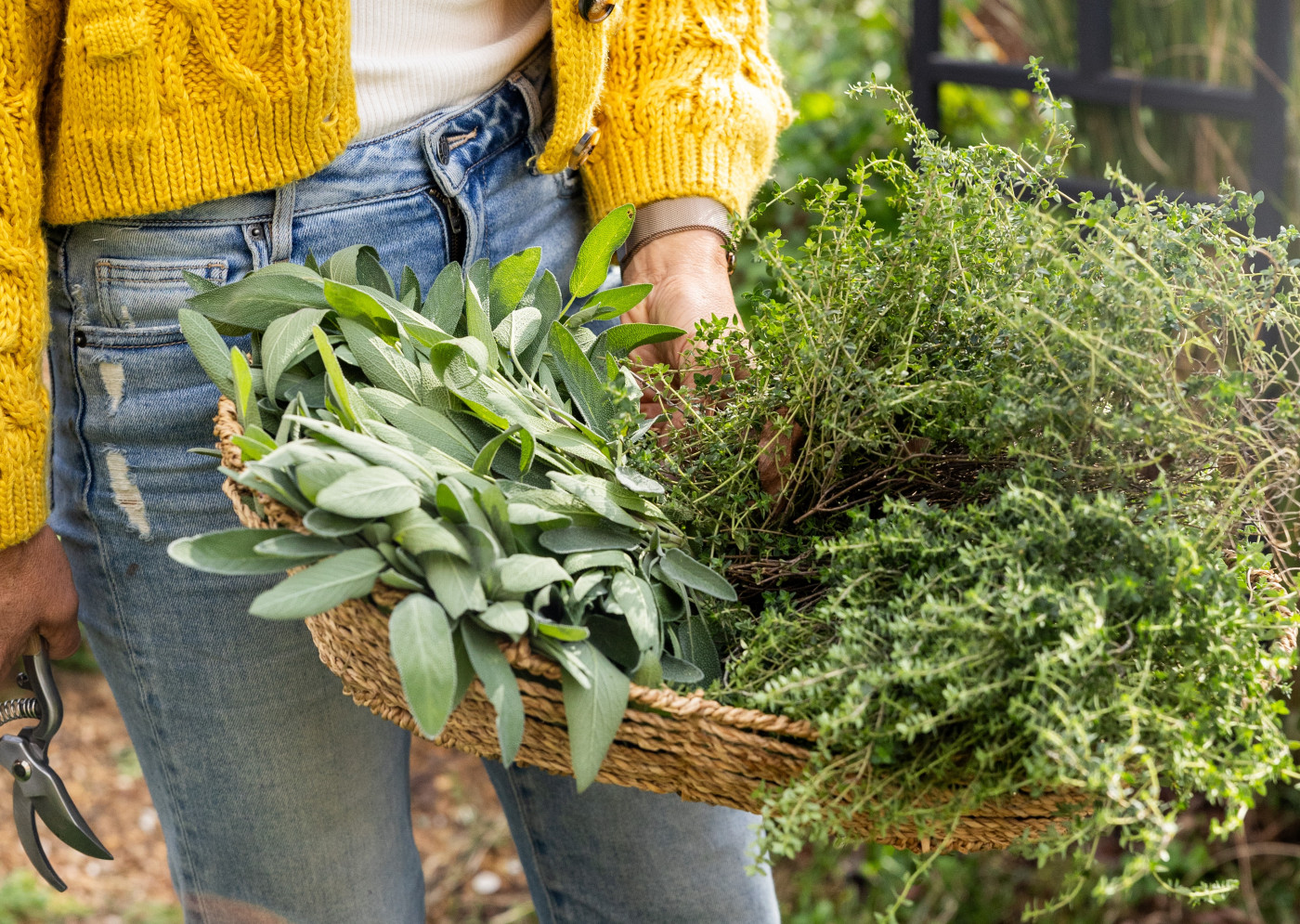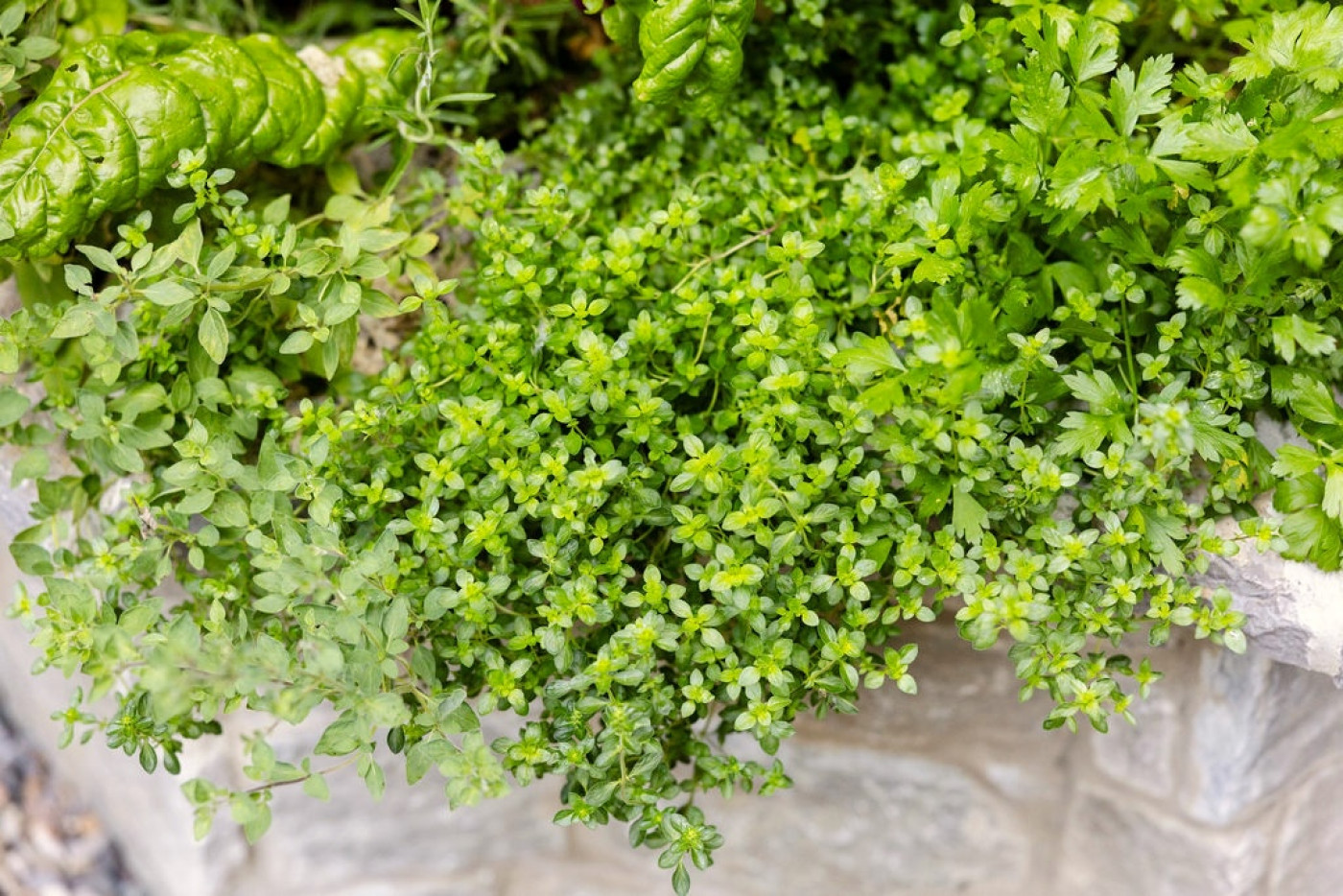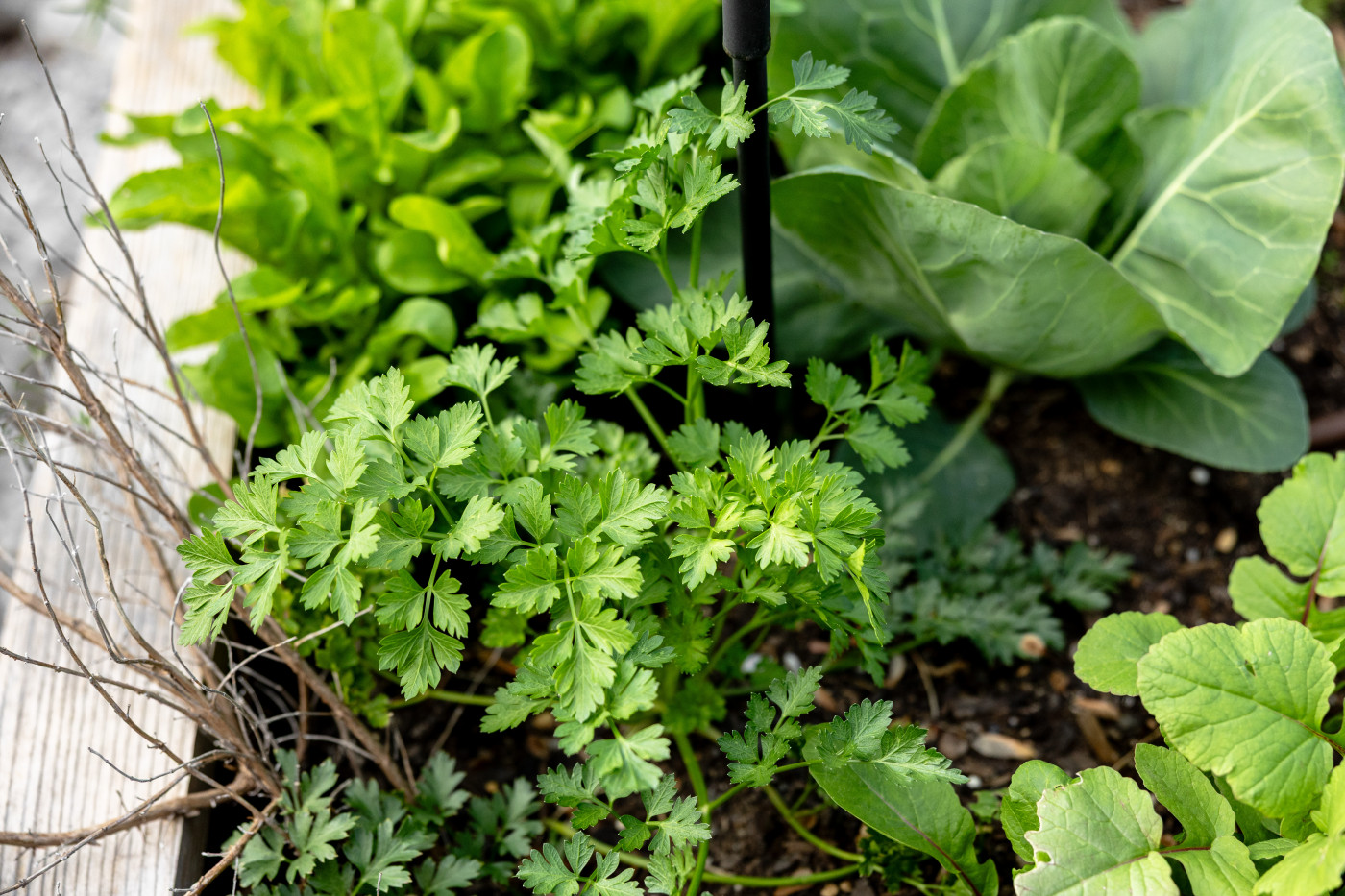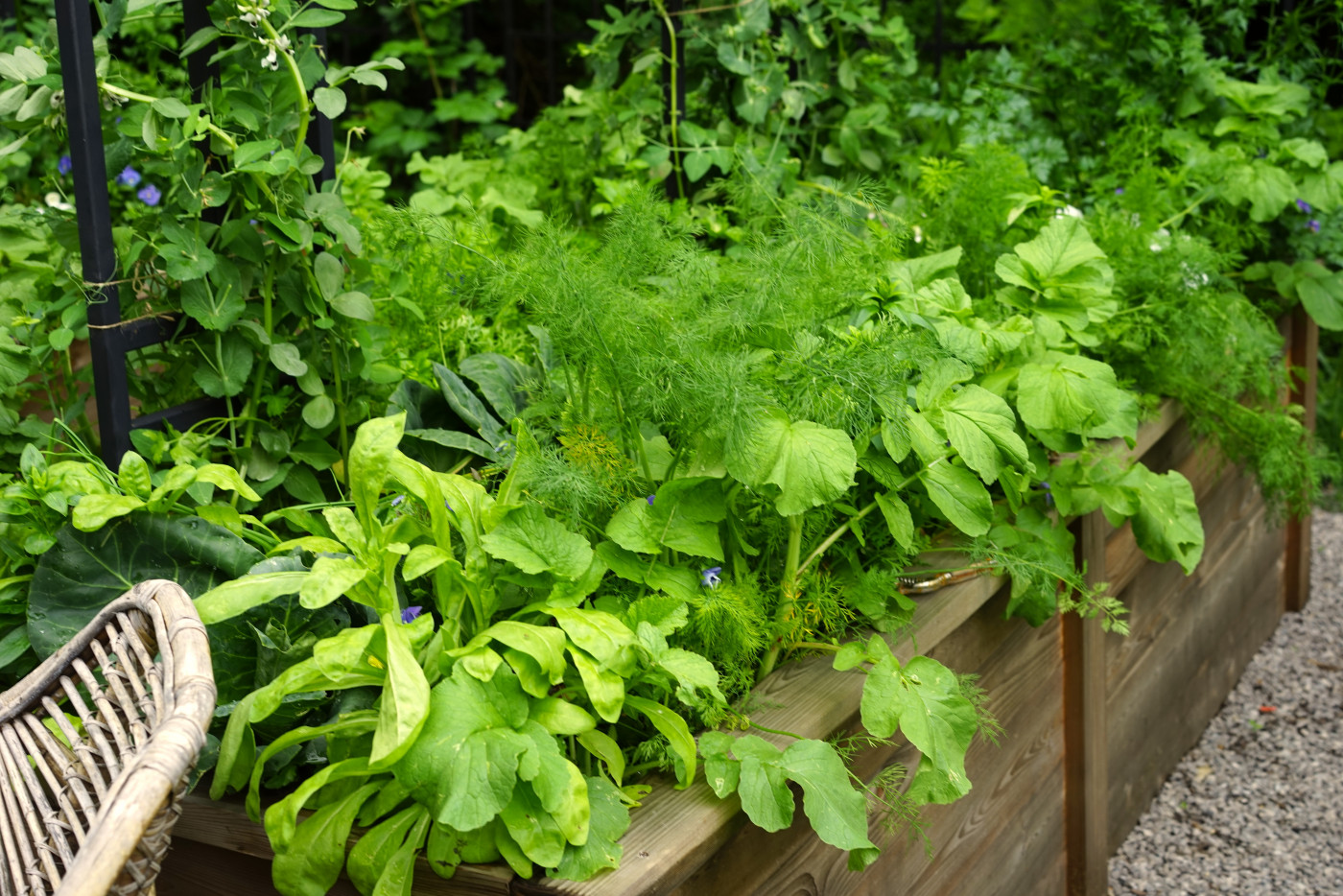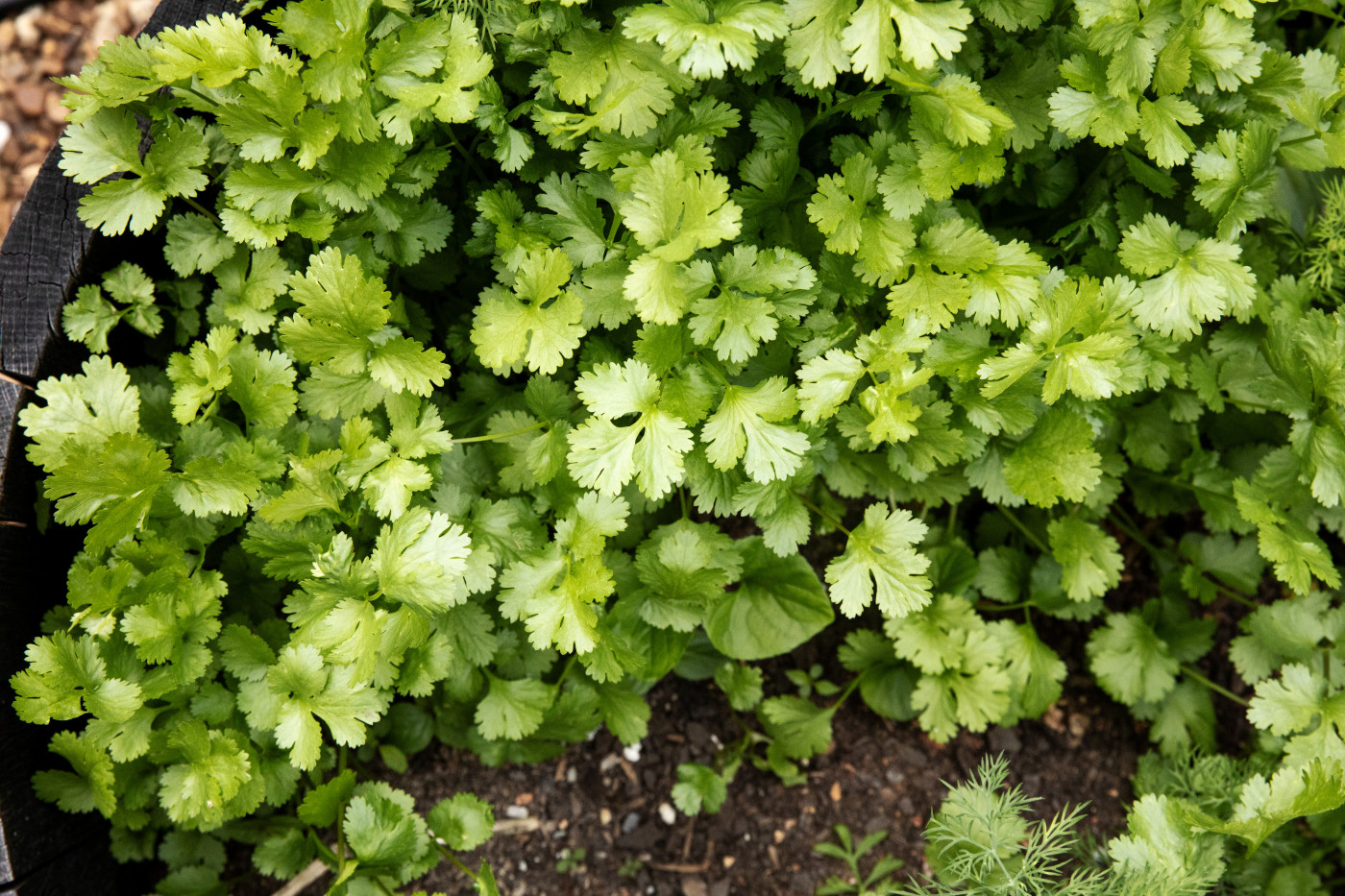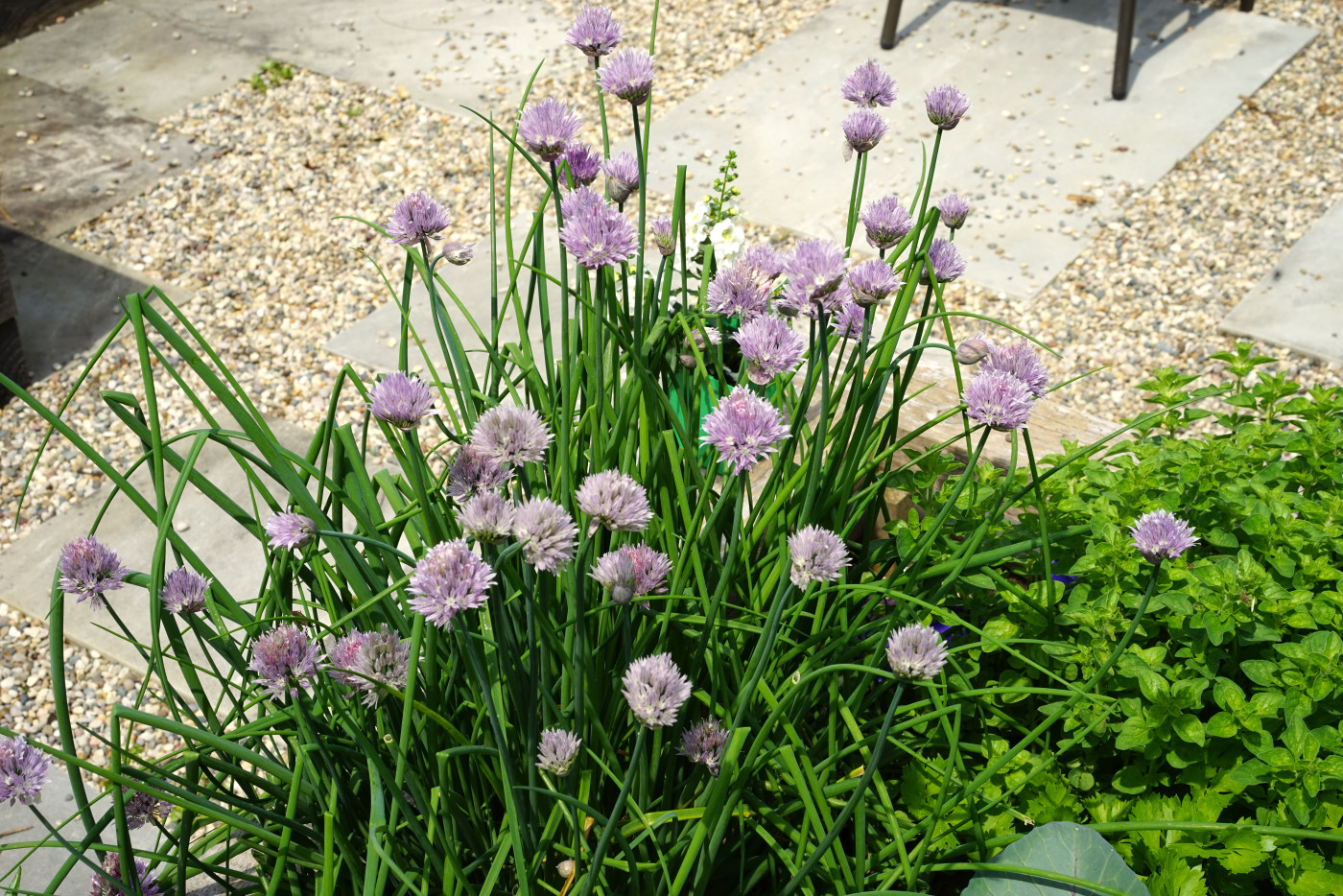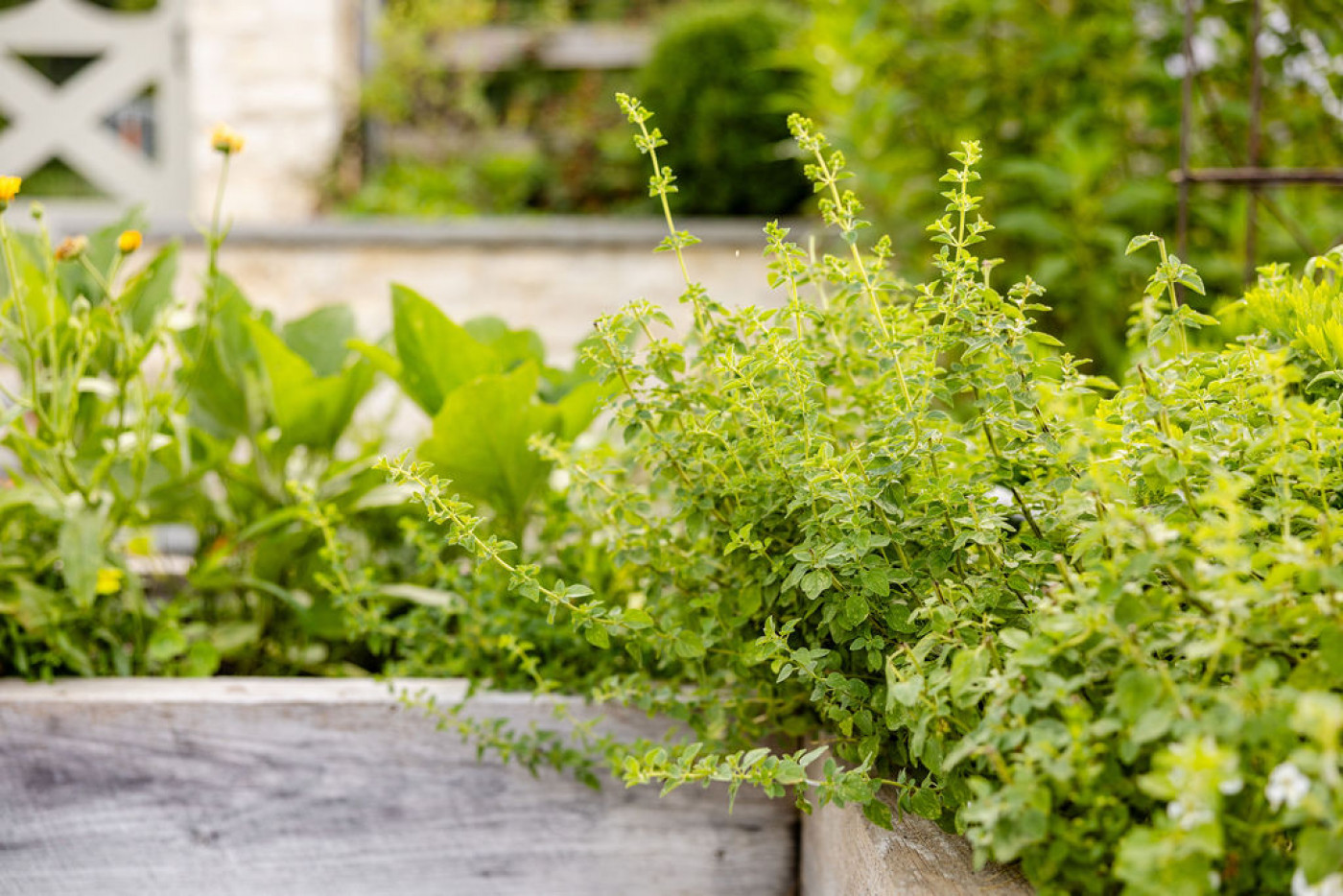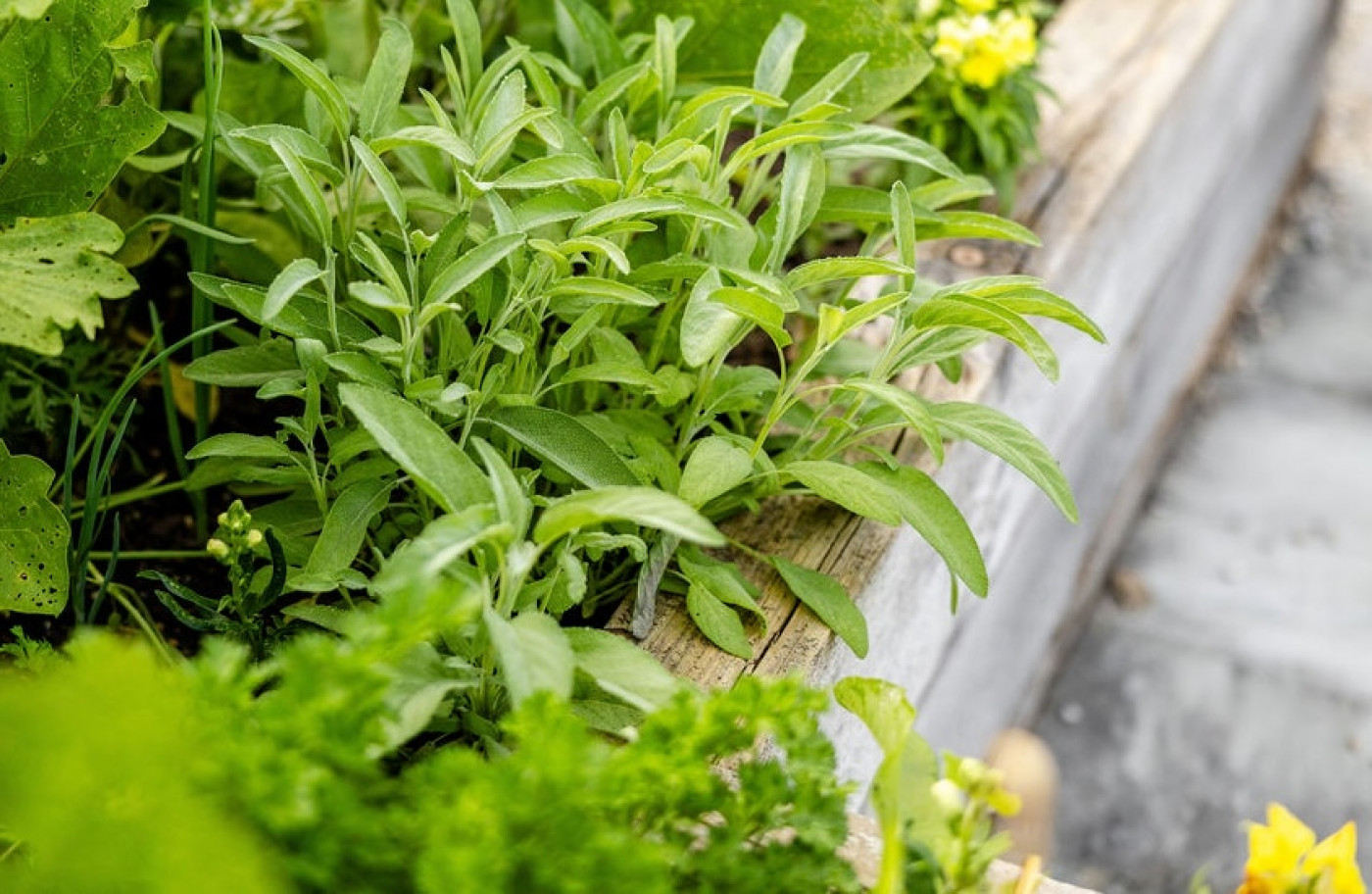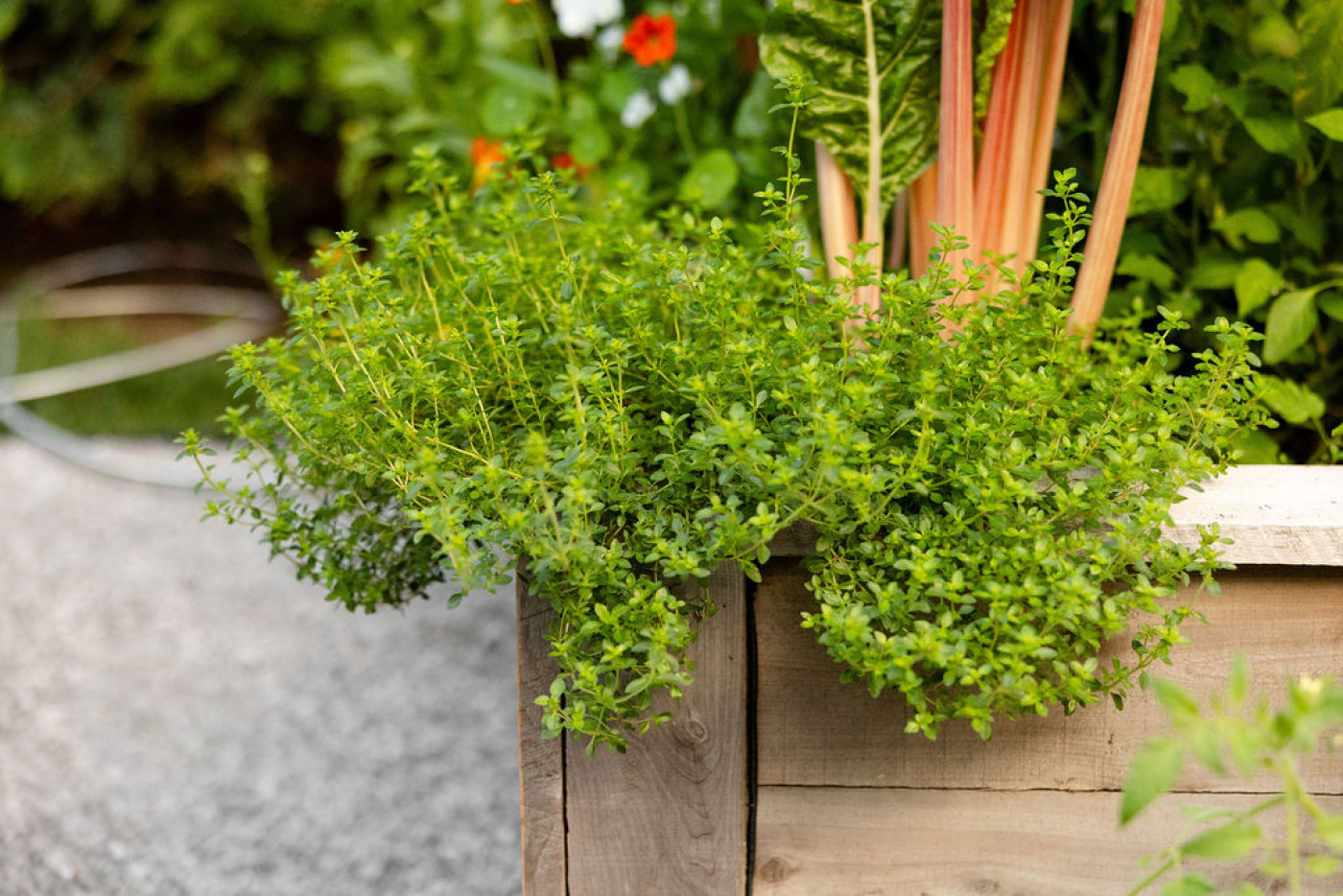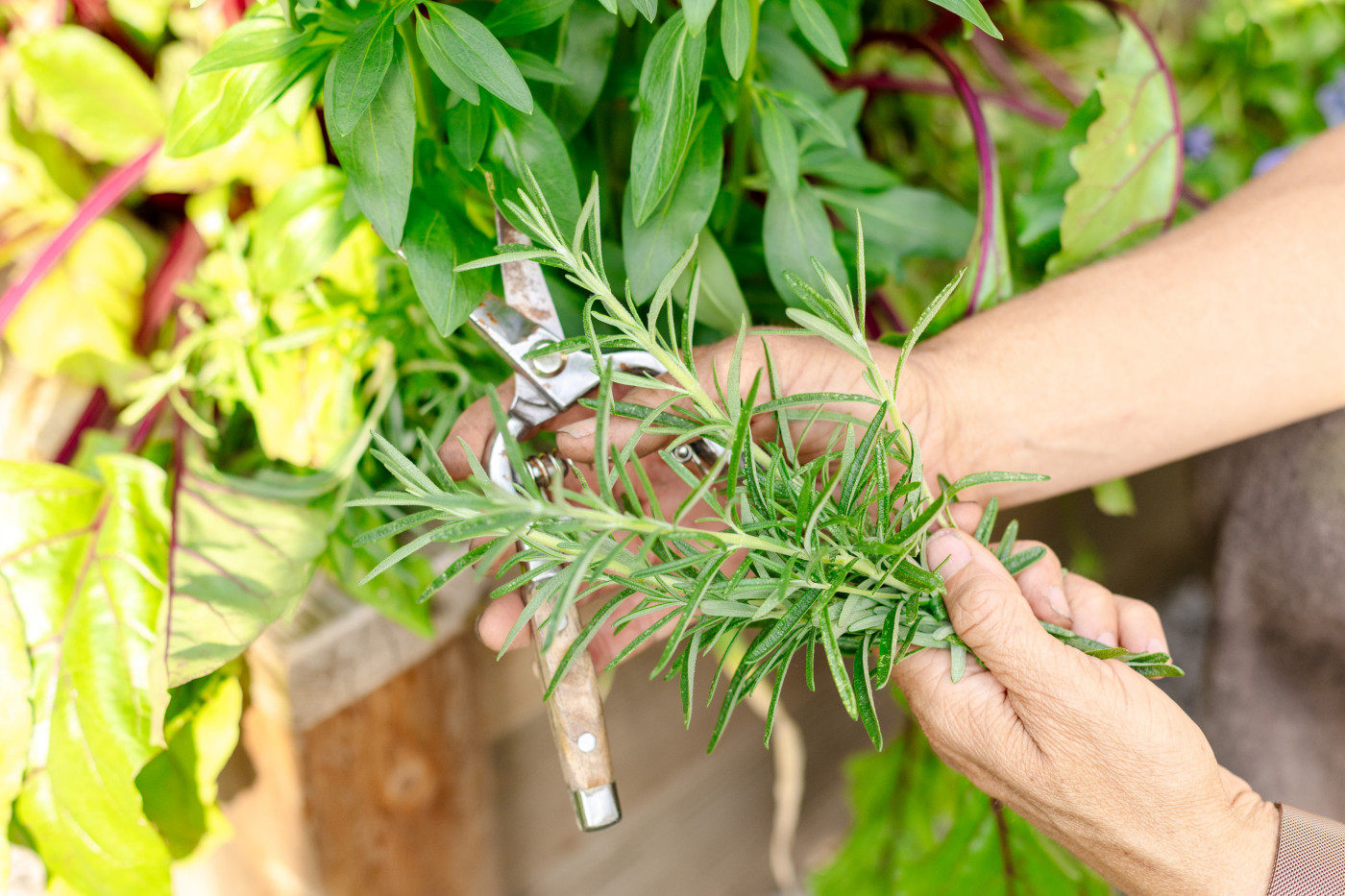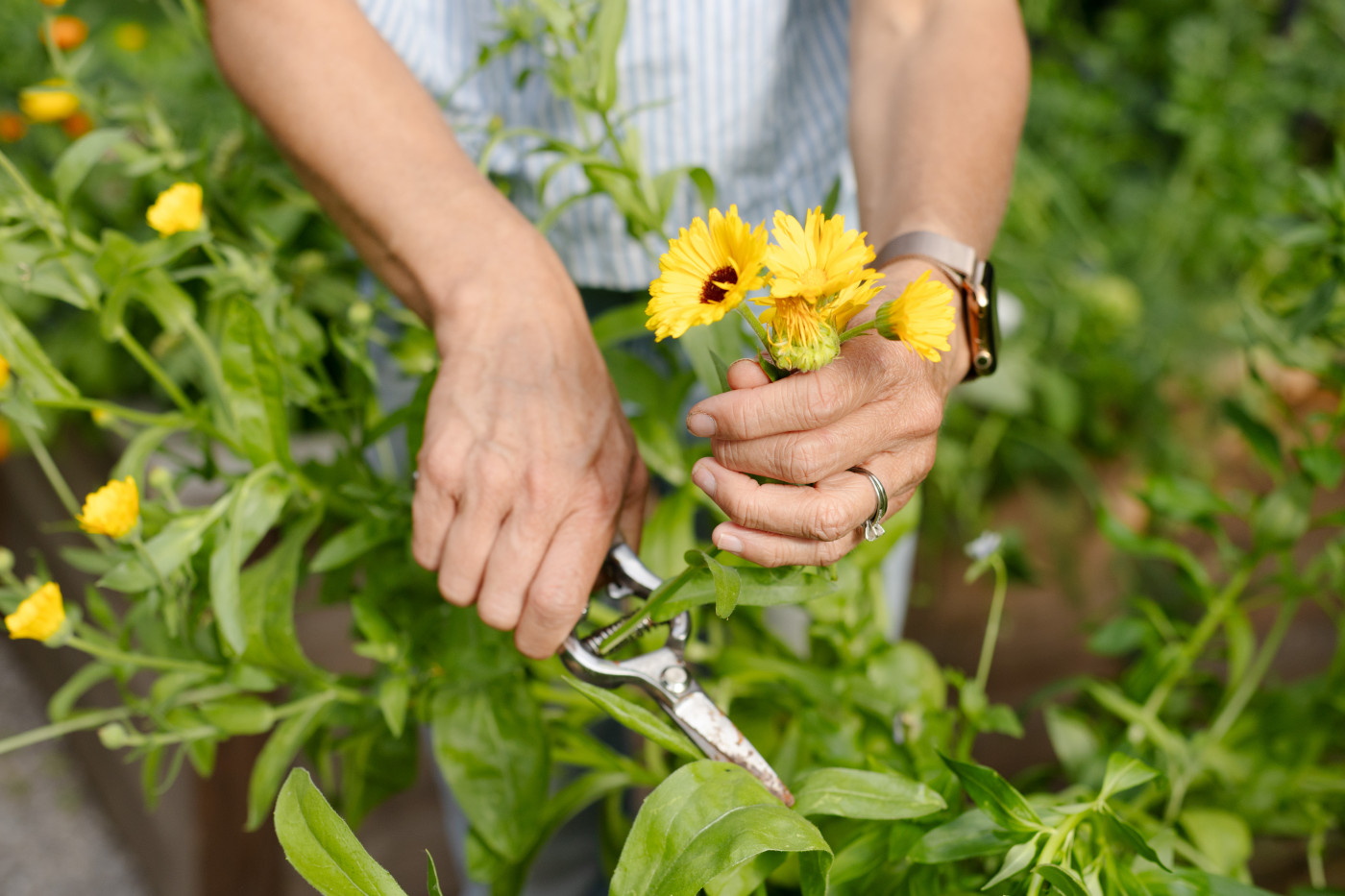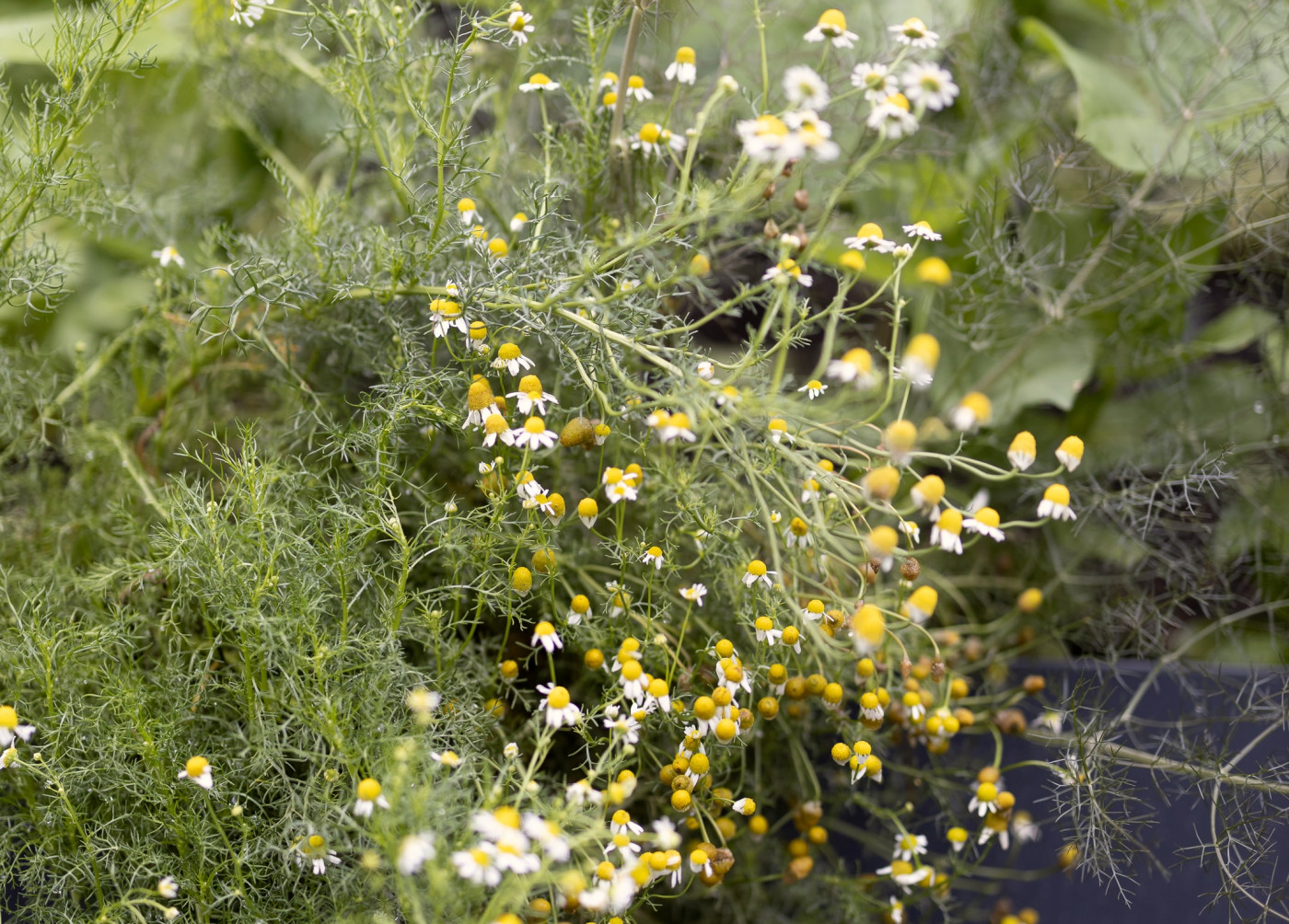Can You Start an Herb Garden in the Fall?
Fall is actually a great time to plant an herb garden. Hardier herbs like rosemary, sage, and thyme can be started this time of year and will grow very well in areas with mild winters. As long as they've had 6 to 8 weeks to get established in your garden, these herbs can even generally hang on for a couple of frosts.
For those of you entering your cool season of gardening for the fall, you can grow annuals like cilantro and dill now and have plenty of time to harvest and enjoy their flavor before your cold season hits.
I'll explore my favorite herbs to grow when the weather cools below in case you're wondering what herbs to plant in fall.
At a Glance
- It's not too late! Planting herbs now means you can get tons of tasty harvests before you close your garden down for winter.
- Fall is a great time to plant frost-tolerant annual herbs like dill, cilantro, and parsley.
- You can also plant hardier perennial herbs like sage, oregano, and thyme in the autumn.


Learn the Easiest Way to Grow Your Own Food
The Easy Garden Kit makes growing your own food simple and stress-free. Everything you need for success is included: the top 10 easiest seeds to grow, a detailed video course, a raised bed setup guide, planting plans, a growing guide, and a delicious recipes book for when you harvest.
How to Create a Fall Herb Garden
If you're a beginner gardener, it's always okay to start off small. Rather than planting herbs in individual pots, I recommend grabbing a container at least 12 inches wide and planting several of your favorite herbs together. One growing space will be easier to move indoors or out as needed; it's even easier to tend. (Just make sure your container has drainage holes since herbs don't like having wet roots). Keep this container close to your back door for easy fall flavor right at your fingertips.
→ Learn more about growing all your herbs together in one container.
I've always had the most success growing herbs in a larger planter, like this rolling steel herb planter. With a little bit more room, the herbs can practically take care of themselves.
Of course, you always have the option of growing more cold-hardy herbs in your vegetable garden to add a little green during the colder months. You could even interplant herbs with fall flowers like pansies in decorative (and edible) planters for your front porch.
No matter where you're growing your favorite herbs, make sure you plant them in well-draining soil.
→ Get more tips on how to start an herb garden and source your plants.
Gardenary's Fall Seed Collection
Get 34 Organic Fall Garden Seeds—Plus Planting Plans & 300 Pages of Growing Guides to Harvest More This Season!
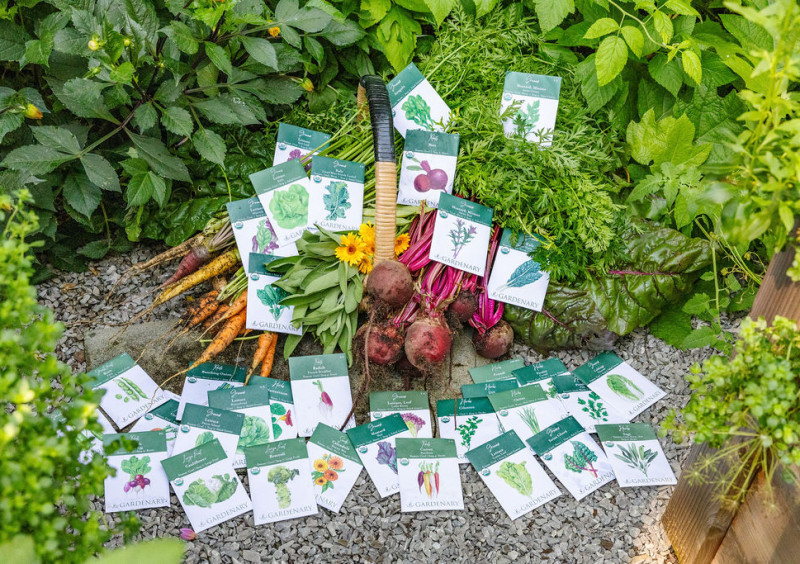
Parsley
Parsley is a low-maintenance herb in the carrot family that will love the cool weather, and because it's a biennial, it can actually last through the winter if your location doesn't get too cold. You can choose between flat leaf parsley and curly parsley (or be like me and grow both).
If you have this herb on hand, you'll find that you can use it in tons of cozy fall recipes, from salads to soups, marinades to pastas.
→ Check out my simple steps to grow your own parsley.
Dill
This cool-loving herb is a must-plant in the fall. It thrives in temps between 40°F (4.4°C) and 75°F (23.9°C). You can begin sowing dill seeds in your garden as soon as your temps drop below 85°F (29.4°C) in late summer or early fall. Harvest tons of frilly dill leaves while you're enjoying nice, cool temps. Your plants may even last into the winter, depending on your climate.
Pro tip: If you have any dill that's flowering in warmer temps, save your dill seeds to add on salads and soups in the wintertime when you're missing that garden-fresh flavor.
Cilantro
Many gardeners try to grow cilantro in the summer so they have tasty leaves for homemade salsas and salads. This is actually the most difficult time to grow this annual herb. Cilantro just wants to bolt (go to seed) in warmer weather.
The fall (and then again in the spring) is actually the best time to plant cilantro. (In warmer climates, you can grow cilantro all winter long.) If you plant cilantro now, you'll still have time to enjoy the leaves before winter makes your soil unworkable.
Plant cilantro once the days start growing shorter and cooler, and you'll have tons of leaves to add fresh, tangy flavor to so many different dishes throughout the fall.
And if you have cilantro that's flowered in your garden currently, let it hang out a bit longer so you can save your own coriander for winter.
→ Check out these useful tips to grow your own cilantro.
Chives
Chives are a fantastic plant to grow if you want to try your hand at gardening, especially if you haven’t had much success yet. With just a little bit of tending, you’ll be able to grow way more chives than you could ever think of using. It was my early success with chives in a pot that whet my appetite for growing my own fresh food in a simple way.
Chives are extremely cold hardy perennials. You can grow them year round in warmer climates, but if you have a proper winter, your plants will die back and then return from their roots in the spring. My chives popped right back up after even the coldest of winters in my Chicago garden. One benefit of having chives regrow after winter is the amount of gorgeous purple blossoms you'll get.
Plant chives now (by starter plant, not seed), and take regular harvests. Use half your harvest now on cozy autumn soups and baked potatoes, and then dry or freeze the other half to set yourself up for winter.
→ Here are my recommendations for how to grow chives and what to do with your chive blossoms.
Download the Free Herb Garden Cheat Sheet
Ready to grow your own fresh herbs but not sure where to start? This quick guide gives you exactly what you need to begin—without the overwhelm.

Oregano
Oregano is an easy-to-grow herb that's winter hardy down to zone 5. That means many of us can plant oregano in the early fall and then look forward to our plants returning in the spring. Here in the mild climate of Nashville, my oregano plants typically die back during a hard freeze around the New Year and then start coming back before Valentine's Day.
Grab a well-grown oregano plant start from your local nursery and then start taking small harvests from it ASAP. After a couple of weeks, it should really take off in the cooling temps. That's when you want to take larger harvests; use a little bit now for pizza or pasta night and dry the rest so you'll have a continuous supply of oregano for winter.
→ Here's more on how to grow oregano.
Sage
Like oregano, sage is considered winter hardy down to zone 5. Sage is a semi-woody perennial that can hang out in your garden for a long time with proper care. My sage plants have held on through really wintry nights, and for most of you, your sage will return in the spring even if it dies back in the winter.
I love how the silvery leaves of sage provide a beautiful contrast to my other plants in the fall garden. Snip sprigs of sage throughout the autumn months to use fresh and then hang some up to dry. That way, you'll have sage to last through all your hearty butternut squash soup nights this winter.
→ Learn how to grow your own organic sage.
Thyme
Thyme tends to do well most seasons of the year in the kitchen garden, including far into the cooler months. Like oregano and sage, it's hardy down to zone 5. It grows quickly, and the stems, with their tiny gray-green leaves, look lovely draped over the corner of an herb garden or raised bed.
Plant some thyme plants now in the corners of your vegetable garden, and you'll be snipping harvests all fall long.
→ Find out everything you need to know about thyme.
Shop Our Herb Seed Collection
Bring flavor, fragrance, and beauty to your garden with this thoughtfully curated Herb Seed Collection. Whether you're a beginner or a seasoned grower, these 14 easy-to-grow herbs will elevate your cooking, attract pollinators, and fill your space with delightful scents all season long.
Rosemary
This woody evergreen herb comes from the Mediterranean, and although it loves lots of sun and warmth, it's hardy enough to survive some winter climates. Most rosemary plants are frost-resistant down to about 10°F (-12.2°C). You can probably stretch that even further with some plastic sheeting or a cold frame. My rosemary plants usually continue producing well past our first frost in Nashville.
I love both the fragrance and the look of rosemary. Rosemary essential oil has been used to treat anxiety and depression, so if you're someone who suffers Seasonal Affective Disorder during the long winter nights, pop some rosemary in your garden asap. Dry the leaves so you can rub your fingers over them and benefit from that heavenly smell all the way till spring.
And if you don't need this herb for its aroma, then you can bring homemade rosemary shortbread to Thanksgiving dinner. I promise it'll be a hit.
→ Find all our tips to grow your own organic rosemary.
Calendula
Calendula, aka pot marigold, is one of my favorite flowers (it's a flowering herb) to grow in the spring and fall. The plants are hardy down to about 20°F (-6.7°C), so some of you may be able to enjoy these beautiful blooms—which come in perfect fall colors like gold, orange, and peach—all through the winter.
Calendula is super easy and quick to grow from seed. If you live in a colder climate, you can enjoy some calendula flowers now and then re-sow in the spring.
These gorgeous flowers are edible and have antioxidant and anti-inflammatory properties. I like to make my own calendula tea from dried blooms—it's a soothing drink on a cold winter night.
Bonus: calendula is the perfect decoy to attract aphids and caterpillars away from your precious fall salad greens.
→ Learn more about how to grow calendula.
Chamomile
Chamomile is calendula's cousin in the daisy family, and its cute daisy-like flowers give any garden a cottage feel. It's low-maintenance and grows well from seed.
Choose between two different types to grow. German chamomile (the best type to grow for homemade chamomile tea) is an annual herb that will die off after your first good frost. (Though it re-seeds easily, so you may still have chamomile plants in the spring.)
Roman chamomile, is a perennial that can tolerate temps as cold as 5°F (-15°C) with some frost protection. This type is great for ground cover but not as tasty.
If you're growing German chamomile, harvest as many leaves as you can in the fall, dry them, and brew them to make cozy teas for the winter.
Grow Your Own Fall Herbs
You can grow perennial herbs like sage, oregano, and thyme from seed, but you'd ideally start them indoors at least 8 to 10 weeks before moving them out to the garden. I recommend buying healthy plant starts from your local nursery for fall planting. That way, you can begin snipping your first tasty harvests that very same week. (Learn more about the best ways to harvest herbs.)
You can buy cilantro, dill, calendula, and chamomile plant starts, or you can direct sow them in your garden as soon as your temps start dropping.
Once your herbs are established, harvest as often as you can. Enjoy part of your harvest fresh, and then dry your herbs or freeze them so you'll have your favorite flavors on hand during the coldest months. No more buying those little plastic boxes of herbs from the store. This is how you get the best ROI on your fall herb garden, no matter how big it is.


There are so many things to love about herbs. They're easy to grow, even for beginner gardeners, and they add beauty to your space. They don’t require much room in the garden, they smell great, and they offer a variety of health benefits and flavor when added to your meals.
Even if you don't have a vegetable garden set up yet, you can still plant an assortment of your favorite fall herbs in a container to put on your patio, your front porch, or a sunny windowsill. Having herbs close at hand makes it even easier to grab a sprig of something delicious the next time you're cooking dinner.
Here's to growing and harvesting your own delicious, organic herbs right from your own beautiful herb garden this fall.
Thanks for helping me make gardening an ordinary part of life again!



